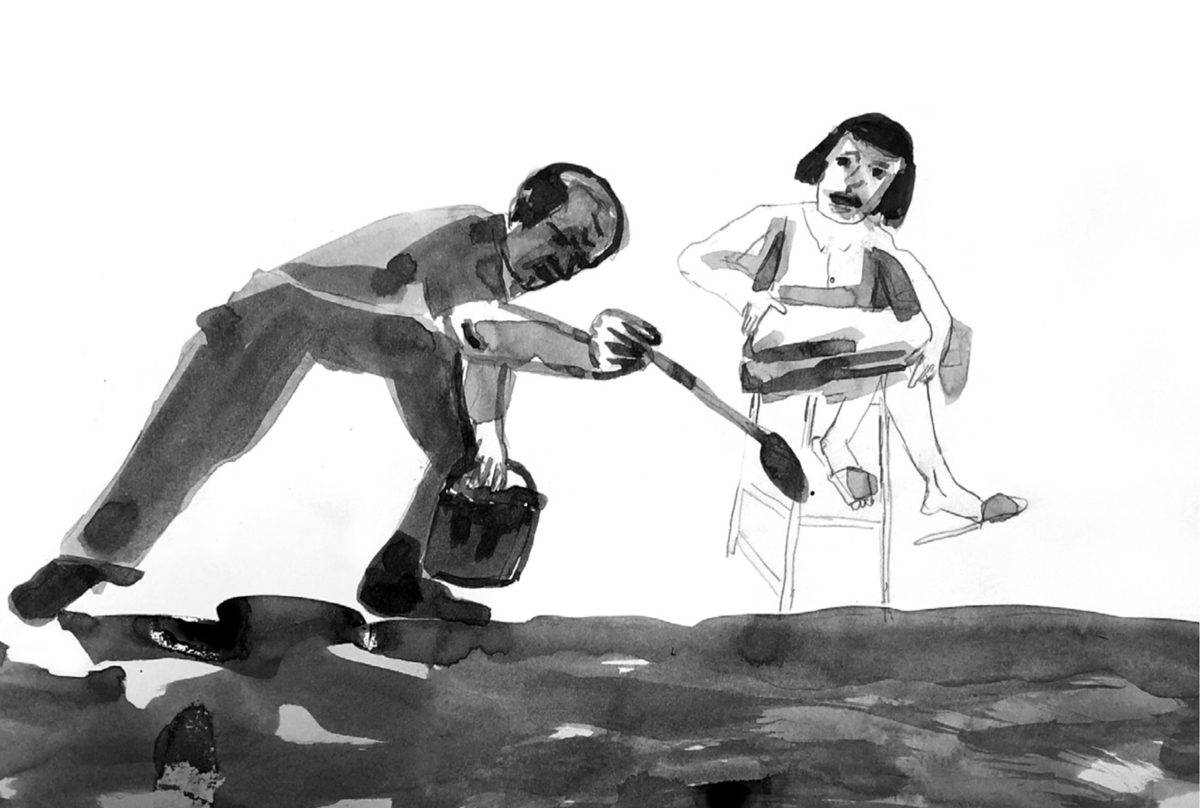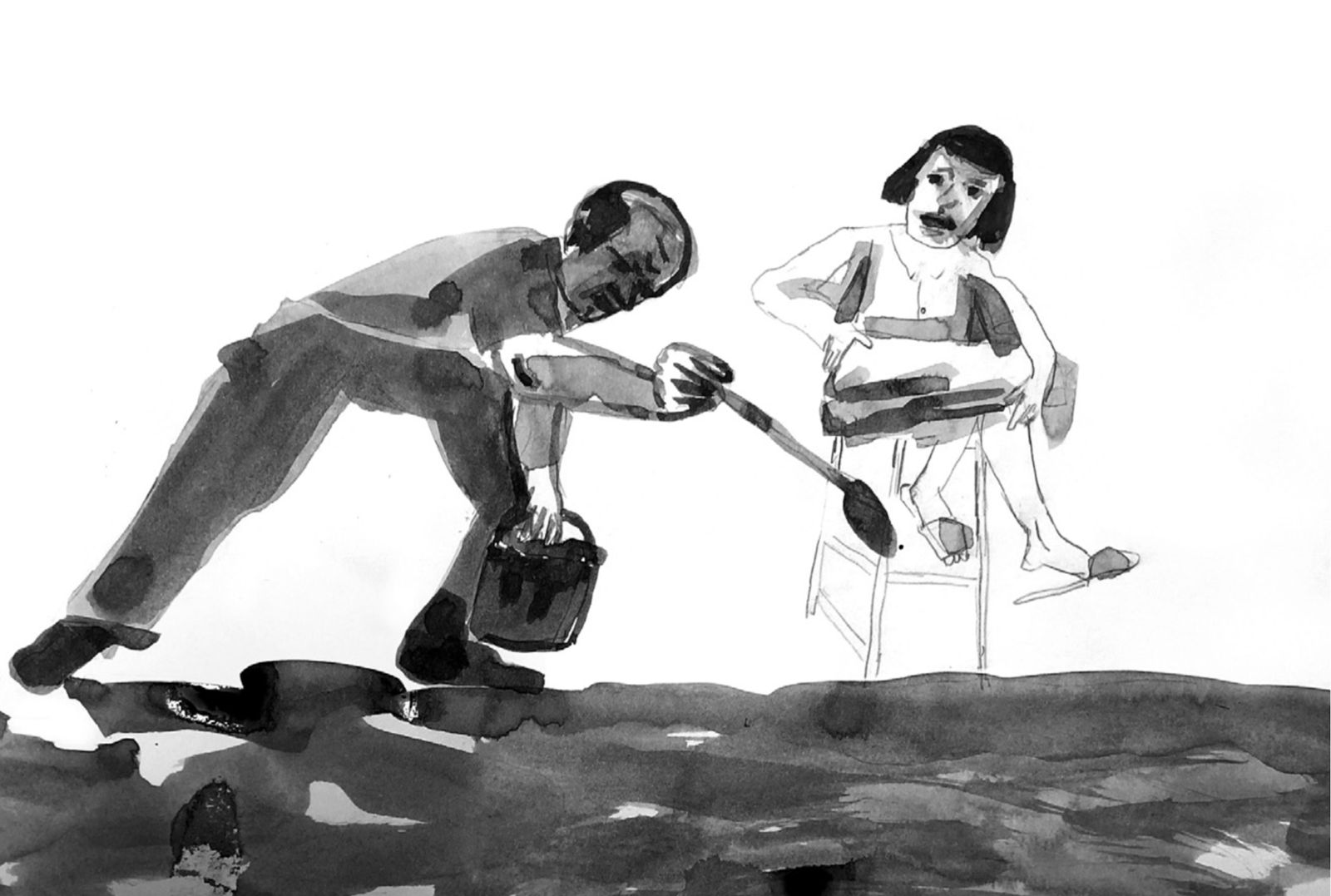Abstract painting has spent much of the past decade in the doghouse. Not only has it been usurped by figurative painting, the genre du jour of a time defined by identity politics and visual representation, it has also been tarnished by its association with Zombie Formalism, gaining a reputation (often deservedly) for apathy and commercial cynicism. Amy Sillman’s selected writings are a welcome reminder that how you paint, as well as what you paint, is intimately associated with the experiences of the body, and that the affective and intellectual significance of process should not be underestimated.
An influential American painter working in what might be called the afterlife of Abstract Expressionism, Sillman is also an inventive and charismatic writer. Published by After 8 Books, with an introduction by Lynne Tillman, Faux Pas comprises seventeen texts written for journals, zines, and lectures between 2009 and 2020. Included are a letter in which Sillman explains that she has broken up with abstraction, which she characterizes as an uptight ex; catalogue essays on peers and influences, Laura Owens, Eugene Delacroix, and Philip Guston among them; and idiosyncratic theories of shape, color, and the diagram, in the form of essays and cartoons. The book asks, and often answers by example: How to talk about painting today? How to reckon with its politically unfashionable past—its entanglement with the market, the canon, the cult of male genius? Why paint at all?
During a time when anti-intellectual sentiment is rife, it’s refreshing to experience a smart and formally ambitious thinker operating at full stretch. Rather than throwing Art History under the bus, Sillman is alive to the transformation of ideas and techniques as they pass through different hands. In “AbEx and Disco Balls,” an essay that has acquired cult status since it was published in Artforum in 2011, she performs a “detournement” of Abstract Expressionism, a “phenomenology of making” to which she was drawn as a student in New York in the 1970s, after the movement had fallen from grace. “Its detractors would have it that the whole kit and caboodle is nothing but bad politics steel-welded around a chassis of machismo,” she writes. Rejecting what she calls the “gender essentialism” frequently bound up in the movement’s historicizing, she finds tenderness in the idea of “speaking from the gut” and potential in its “deterioration into cliche.” In her hands, “AbEx was like a big old straight guy who had gone gay.”
Writing in the Paris Review in 2010, the painter David Salle said of Sillman’s paintings that they are “never heavy”; that they are characterized by “ingenuity and immediacy, and they don’t shy from the anecdotal ‘a funny thing happened’ feeling of life.”1 A similar thing could be said of her prose style. “I polish my texts intensely—I spend lots of time fussing over the vocabulary—but I want them to look easy, straightforward, earnest, even dumb,” she has said. At times this manifests in an ironic choreographing of “high” and “low” (or “smart” and “dumb”) that comes off as self-conscious, dropping phrases like “#notsurprised” alongside critical insights into the work of Eugene Delacroix. A related shuffling of signifiers can be seen in the display of her artwork, and a tendency to show oil paintings alongside iPhone animations or zines (as she did in the exhibition “Landline” at Camden Art Centre in 2018), as if preemptively accounting for criticism of painting as stuffy and elitist by adopting a popular and DIY vocabulary. Like watching a virtuoso professor tagging the walls of the lecture theater to show they are down with the critique of the academy, the effect can be jarring, but perhaps a certain degree of self-consciousness is to be expected among artists working in a medium so frequently declared dead. Even a painter as ballsy as Sillman, it seems, is not immune from internalized paint-phobia.
Sillman’s willingness to adopt different formats and styles is also what makes her work dynamic, and discomfort is a quality she values. She is in her element when elucidating what motivates her to paint. My favorite essay in the book is “Shit Happens: Notes on Awkwardness,” originally published in Frieze d/e in 2015, in which she explains that she is not driven by a search for beauty or erotics—talk of which, she says, makes her want to “barf”—but “awkwardness.” To explain what she means she turns to “lame iambic,” a Latin pentameter used in the poetry of Ovid, “in which the stress at the end of the line purposefully comes down on the ‘wrong’ foot.” This bum note is what she’s looking for: the thing that “turns around and questions the whole rest of the line,” upsetting the apple cart and, in the process, opening up the possibility of communicating something hitherto unarticulated. “We are trying to surprise ourselves and that is hard to do,” she writes of the artist’s pursuit; a restless, and admirable, philosophy.
Faux Pas: Selected Writings and Drawings by Amy Sillman was published by After 8 Books on October 20, 2020
David Salle, “Amy Sillman and Tom McGrath,” The Paris Review (Winter 2010), https://www.theparisreview.org/art-photography/6067/amy-sillman-and-tom-mcgrath-david-salle.


